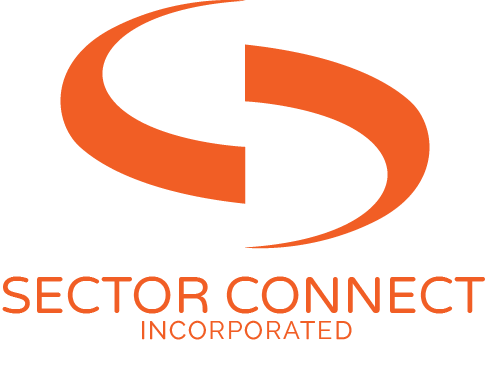
Inclusion of people with cerebral palsy
Aim
Our aim is to provide information and resources to support community volunteering organisations to implement inclusive practices for volunteers with cerebral palsy (CP). There are many benefits to an inclusive workplace.
Inclusive practices can support increased opportunities for people with cerebral palsy, support a diverse workforce and help organisations meet corporate social responsibility expectations.
Many of the recommendations included in this resource would also benefit people with various other types of disability. The most important thing is to speak to each volunteer within your organisation about what specific adjustments might assist them to be successful in their role.
Introduction to cerebral palsy
Cerebral palsy is a neurological condition caused by an injury to the developing brain (Wilma et al., 2021). It is a physical disability affecting the development of movement, muscle tone, balance, and posture (Wilma et al., 2021).
Cerebral palsy is the most common physical disability in childhood
34,000 people are living with CP in Australia, 17 million worldwide
1 in every 700 Australian babies is diagnosed with CP and for most, the cause is unknown. 57% of people with CP are male.
Symptoms include exaggerated reflexes, floppy or rigid limbs and involuntary movements (Wilma et al., 2021).
The disability can range from minimal to profound and the impact on daily life is individual to each person (Cerebral Palsy Alliance, 2022).
Cerebral palsy is a permanent life-long condition. While the original brain injury is non-progressive, people with CP may experience increasing secondary conditions as they age, including joint dislocations or contractures, osteoarthritis, neuropathy, and chronic pain (Wilma et al., 2021).
Physical implications of cerebral palsy
Cerebral palsy is described both by motor type, and by the part/s of the body impacted.
Cerebral palsy can affect different parts of the body:
Quadriplegia: When both arms and both legs are impacted, as well as often the muscles of the trunk, face and mouth
Diplegia: When the legs are most significantly impacted. The arms may be impacted to a lesser extent.
Hemiplegia: When one side of the body is impacted, for example the right arm and leg.
There are three main types of cerebral palsy, as well as mixed types:
Spastic cerebral palsy: This is the most common form affecting 70-80% of people with CP. It presents as tightness and stiffness in the muscles and arises from damage to the motor cortex of the brain.
Dyskinetic cerebral palsy: Characterised by involuntary movements, dyskinetic CP affects 6% of people with CP. It arises from damage to the basal ganglia.
Ataxic cerebral palsy: Characterised by shaky movements which affect balance and sense of positioning in space. Ataxic cerebral palsy affects 6% of people with CP and is caused by damage to the cerebellum (Cerebral Palsy Alliance, 2022)
Other implications of cerebral palsy
In addition to the primary physical disability, many people with CP have additional challenges. For example:
1 in 4 people with CP have significant speech impairments
3 in 4 people with CP experience pain
1 in 4 have epilepsy
1 in 2 have some level of intellectual disability
1 in 10 have a severe vision impairment
1 in 4 experience behaviour and emotional challenges (Novak et al., 2012).
The benefits of including people with cerebral palsy in your organisation
The benefits to your organisation
Volunteering involved organisations can benefit from an increased pool of potential volunteers when they are open to making adjustments to include volunteers with diverse backgrounds and abilities.
Volunteers with diverse backgrounds and disabilities, including CP, bring with them a huge array of life experience and a level of resilience that will contribute positively to your organisational culture and the broader community.
Your organisation’s reputation as an inclusive space for volunteers is also likely to lead to other benefits, including more business. Including volunteers and employees with disabilities will make customers with disabilities feel included and welcome in your organisation.
The benefits to the broader community
The benefits to the broader community include inclusivity, increased social capital and inclusion, and reduced prejudice.
When the community is provided opportunities to interact with people with cerebral palsy and other disabilities through volunteering, it facilitates knowledge through communication, breaks down stereotypes and highlight the strengths and capabilities of all people involved (Miller et al., 2002).
The benefits to people with cerebral palsy
People with CP have an increased risk of being socially isolated and participate less in their communities than others (Markova, 2018). By creating inclusive volunteering opportunities, individuals with cerebral palsy will be able to increase their community engagement and discover new interests, hobbies, and skills.
Research consistently demonstrates both physical and mental health benefits of volunteering.
Further, volunteer opportunities will decrease social isolation for adults with cerebral palsy while increasing participation within the community (Kappelides et al., 2018). Increased community participation will provide an increase in self-esteem and confidence (Rak et al., 2014).
Through volunteering, individuals will develop a new set of skills. This will offer further benefits in terms of paid employment opportunities and daily living skills and support a sense of pride and purpose (Lindsay et al., 2018).
Why is it important to make reasonable adjustments for volunteers?
In addition to accessing the many benefits described above, supporting diversity in your volunteer workforce is a legal responsibility.
In Australia, the law says that people with disabilities should be able to access your goods or services, and your workplace, just like anyone else. This includes as customers, paid employees, and volunteers.
If a potential volunteer with a disability is excluded this opportunity based on their disability, they could make a complaint of discrimination under either State or Territory anti-discrimination laws, or the Federal Disability Discrimination Act (1992). You need to make any reasonable adjustments that may be necessary unless they would cause your business ‘unjustifiable hardship’. This includes adjustments for customers, staff, and volunteers.
Making your business more accessible and inclusive is also likely to make it safer for customers, staff, and volunteers, and could have a positive effect on your public liability and work health and safety responsibilities.
Making reasonable adjustments for volunteers with cerebral palsy
Remember that being inclusive is not just about physical access. There is a lot you can do to improve access and inclusion even if it is not possible for you to make your business completely physically accessible.
The following sections contain lots of ideas of ways to increase inclusiveness within your organisation for volunteers with disability including CP. Lots of these ideas may be beneficial for a diverse range of volunteers with disabilities.
The best way to see how to include volunteers in ways that will work best for them and for your organisation is to ask them!
Creating a welcoming environment
Simple positive gestures of inclusivity can immediately make potential volunteers with CP or other disabilities feel welcome. This could include:
A statement committing to inclusiveness on your organisation website
Disability affirming language on your website and all signage
Symbols and signage highlighting accessible entrances, bathrooms etc
Celebrating important events such as International Day of People with Disability on 3rd December, and World Cerebral Palsy Day on 6th October.
If needed, consider seeking some training for yourself and your staff to learn more about disability in the workplace.
Take the time to listen to people with CP speak, as they may speak more slowly or with less clear speech. Don’t pretend you have understood if you haven’t! Don’t be afraid to ask a person to repeat or rephrase. Some people may prefer to write or use assistive technology to help them communicate.
Using inclusive language
If you are making the effort to make your business more inclusive it is also important to make sure your staff and the signage you use is part of that effort. Using appropriate language in relation to all people with disability is a very important sign of respect.
Use signage that identifies:
‘Accessible Toilet’ not ‘Disabled Toilet’
‘Accessible Parking’ not ‘Disabled Parking’
‘Accessible Entry’ not ‘Disabled Entry’.
Refer to a person with disability rather than a disabled person, or a person with cerebral palsy, not a cerebral palsy person. An exception is for autistic people, who most commonly prefer identity-first language. If you’re not sure – respectfully ask. Most often there is no need to call anyone anything other than their name!
Refer to a person who uses a wheelchair rather than someone confined to one
Refer to a person who has CP, is blind, or has another type of disability, rather than saying a person suffers from it.
